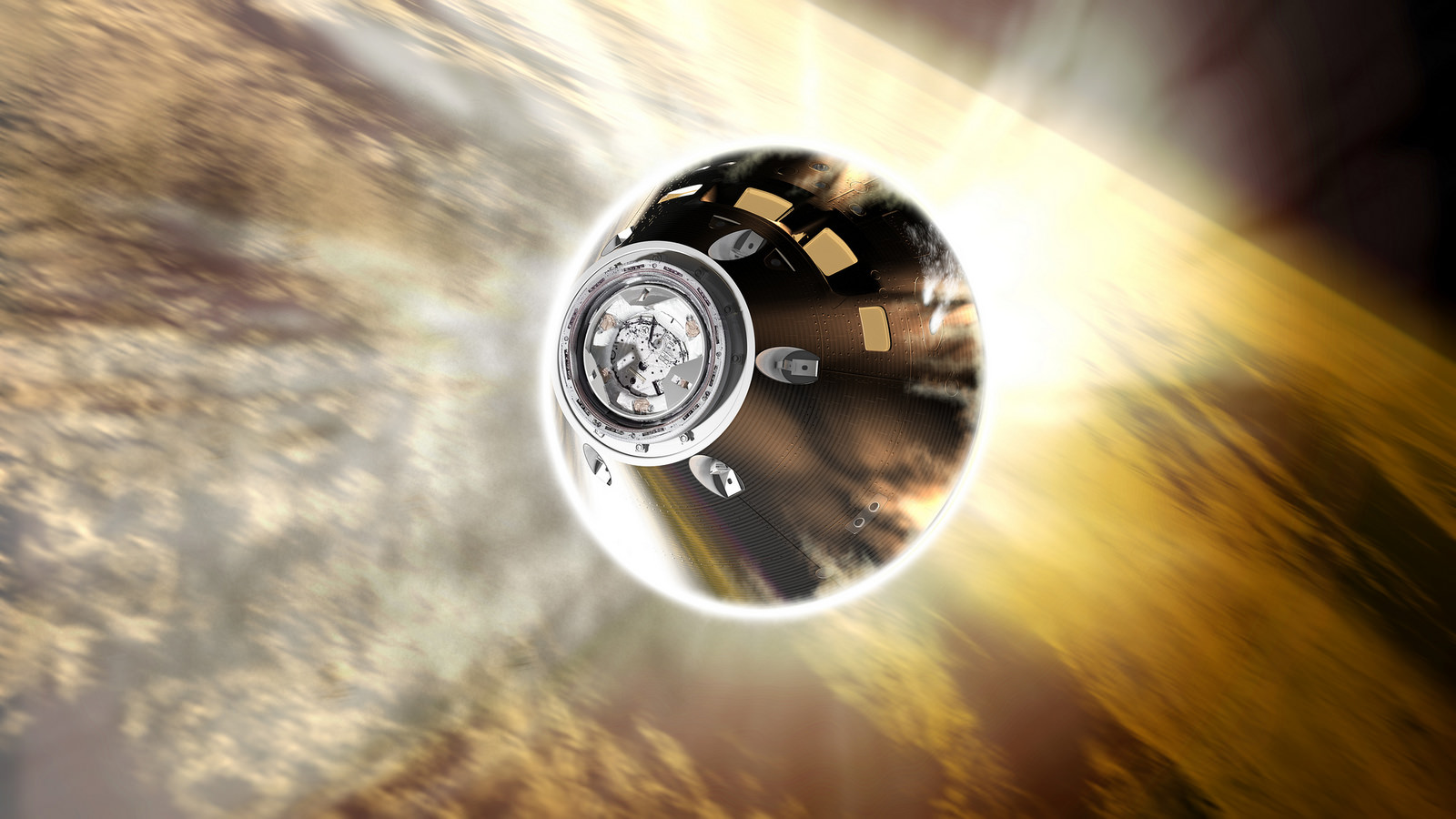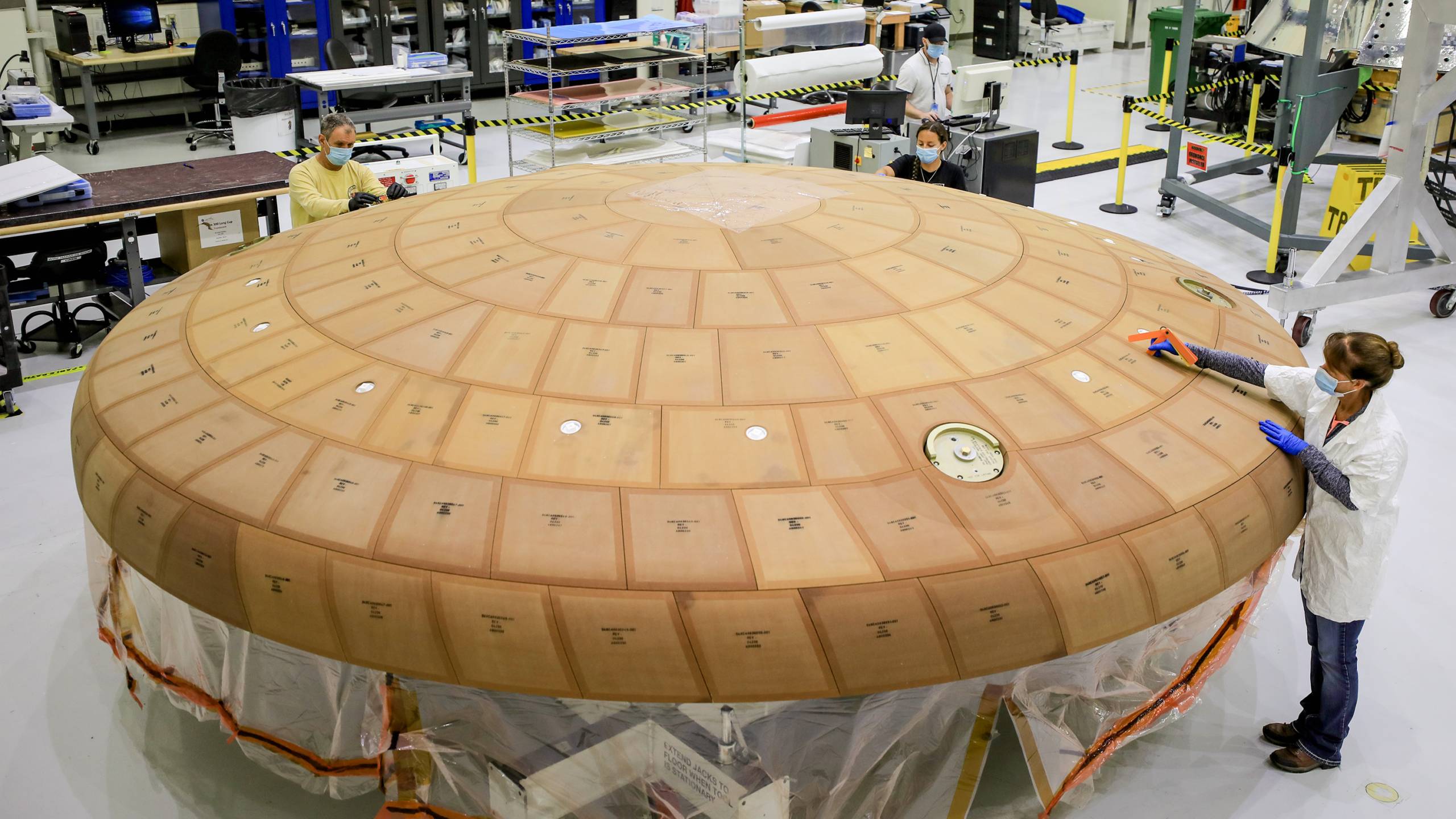NASA still investigating Orion heat shield issues from Artemis 1 moon mission

The landmark 2022 moon mission was a success, but questions remain about how Orion's heat shield performed.

Earlier this year, NASA announced it had delayed until September 2025 the crewed Artemis 2 swingby of the moon, a practice run to prepare for 2026's Artemis 3 mission, which will land astronauts near the lunar south pole.
One reason cited for the 10-month delay was getting to the bottom of reentry heat shield data from Artemis 1, which sent an uncrewed Orion capsule to lunar orbit and back.
Engineers have been analyzing data from that shakeout cruise, which began with a launch by NASA's Space Launch System megarocket on Nov. 16, 2022.
The 25-day Artemis 1 mission ended on Dec. 11, 2022, with the Orion capsule splashing down under parachutes in the Pacific Ocean off Baja California.
Related: The 10 greatest images from NASA's Artemis 1 moon mission
Blistering reentry
Orion's heat shield took on the 25,000 mph (40,000 kph) reentry speed that day, protecting the capsule ably. But soon thereafter, NASA and contractors began wrestling with the discovery that Orion's ablative heat shield wore away differently than predicted.
Some areas of expected charred material ablated away in a manner not forecast by computer modeling and ground testing. Also, there was slightly more liberation of the charred material during reentry than anticipated.
Breaking space news, the latest updates on rocket launches, skywatching events and more!
Orion's heat shield features the same ablative material, called Avcoat, used during the Apollo program in the late 1960s and early 1970s. However, the building process for the heat shield was changed from the Apollo-era method.
Vintage Apollo
While Avcoat is vintage Apollo, the production process for Orion's 21st-century thermal protection system was altered.
According to Lockheed Martin, the firm leading Orion's heat shield development process, "instead of having workers fill 300,000 honeycomb cells one by one with ablative material, then heat-cure the material and machine it to the proper shape, the team now manufactures Avcoat blocks — just fewer than 200 — that are pre-machined to fit into their positions and bonded in place on the heat shield's carbon fiber skin," the aerospace firm's website explains.
This process allows Avcoat to be applied in just a quarter of the previous time and saves money as well, according to the company.
Root cause
Post-flight inspection of the Artemis 1 Orion heat shield showed an unanticipated loss of char layer pieces from the spacecraft. NASA has been laser-focused, quite literally, on understanding the root cause of the char loss phenomena, as well as Avcoat cracking.
"We designed and executed a building block ground testing approach using agency and external test facilities," NASA's Orion program office told Space.com.
The initial test series began in the summer of 2023 and wrapped up in a last test series in December 2023. "We expect to establish root cause this spring," the NASA office stated.
Simulation testing
Those Orion heat shield tests involved the Laser Hardened Materials Evaluation Laboratory, a unique facility operated by UES, a BlueHalo company in Dayton, Ohio, and managed by the Air Force Research Laboratory. This lab does thermal simulation testing, equipped with high-power lasers.
Testing was also performed at the Arc Jet Complex at NASA's Ames Research Center in California's Silicon Valley. Arc jet testing is done on thermal protection material with plasma mimicking the intense heat generated during the plunging atmospheric reentry of the Orion capsule.
For its part, Lockheed Martin teamed up with NASA to organize a core team of engineers to investigate and understand the cause of the char loss and what would need to be done to prevent similar occurrences on future flights, said Blaine Brown, Orion Spacecraft Mechanical Systems Director at the company.
"Over the past year, the Lockheed Martin team, alongside with NASA, have been very busy producing test articles and supporting reentry environmental tests in various NASA and industry test chambers," Brown told Space.com.
These tests have produced a wealth of information for the investigation team, Brown said. "Lockheed Martin has also been providing analytical expertise to demonstrate acceptable thermal margins to support flight rationale for the Artemis 2 mission."
Related: NASA's Artemis program: Everything you need to know
Heat shield hiccups
Last year, the Orion program office at NASA's Johnson Space Center in Houston responded to a Space.com request for comment about heat shield hiccups.
"We expect the material to ablate with the 5,000 degrees Fahrenheit [2,760 degrees Celsius] the spacecraft encounters on a reentry through Earth's atmosphere, and to see charring of the material through a chemical reaction, but we didn't expect the small pieces that came off, versus being ablated," the NASA office stated.
There was a healthy margin remaining of virgin Avcoat, and temperature data inside the cabin remained at expected levels, so if crew were on board they would not have been in danger, the program office statement explained.
NASA said a dedicated investigation includes planned testing, detailed analysis, extensive sampling of the heat shield, and review of data from sensors to appraise what the Orion capsule experienced on reentry.
Avcoat changes?
Is it possible that changes in the Avcoat may be needed?
"It's still too early in our testing and analysis to arrive at any potential recommendations or solutions that address additional char liberation," the NASA office responded in its 2023 communiqué.
It is possible that the Artemis 1 heat shield phenomenon may just be intrinsic to this heat shield, the office said at the time.
Furthermore, it might be what NASA would expect in the capsule's return from the moon, "but we'll let the data inform us," the Orion project office said, adding that "our teams want the confidence that we have the best heat shield possible to fly humans going forward."

Leonard David is an award-winning space journalist who has been reporting on space activities for more than 50 years. Currently writing as Space.com's Space Insider Columnist among his other projects, Leonard has authored numerous books on space exploration, Mars missions and more, with his latest being "Moon Rush: The New Space Race" published in 2019 by National Geographic. He also wrote "Mars: Our Future on the Red Planet" released in 2016 by National Geographic. Leonard has served as a correspondent for SpaceNews, Scientific American and Aerospace America for the AIAA. He has received many awards, including the first Ordway Award for Sustained Excellence in Spaceflight History in 2015 at the AAS Wernher von Braun Memorial Symposium. You can find out Leonard's latest project at his website and on Twitter.



